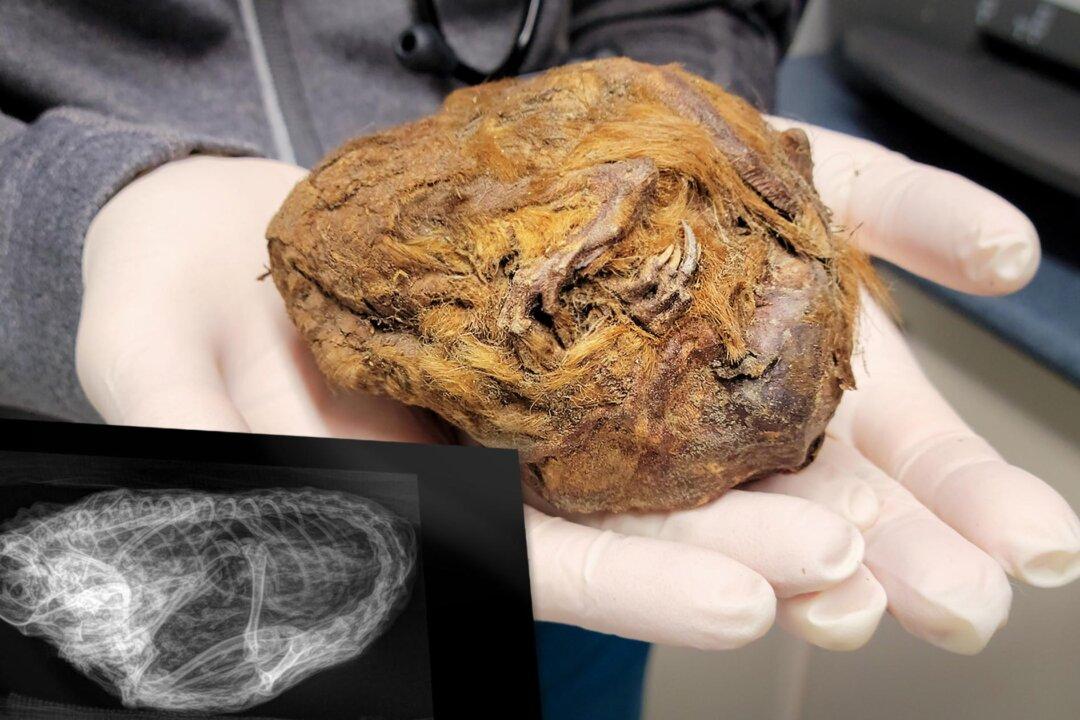When a gold miner found a stiff ball of fur in Yukon, Canada, he had no idea what it was at first. Closer inspection showed that the grapefruit-sized clump contained tiny hands and claws, a tail, and ears—with scientists concluding that the creature is, in fact, a mummified squirrel from the Ice Age.
X-rays revealed that the young arctic ground squirrel had curled up to sleep in its nest some 30,000 years ago, never to wake. The little critter then lay perfectly preserved, buried in the Klondike permafrost for an exceedingly long period before the careful hands of a miner claimed it.






